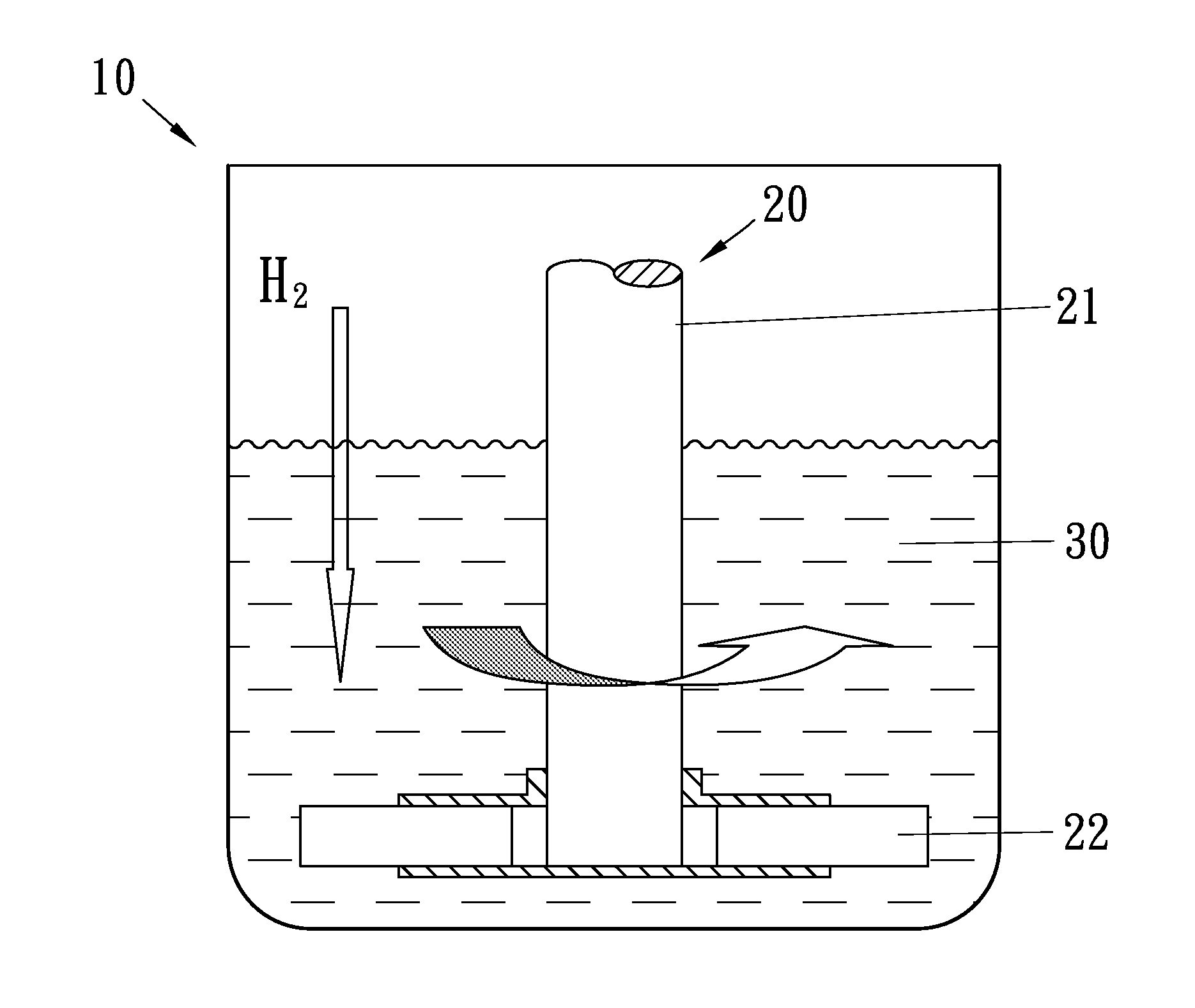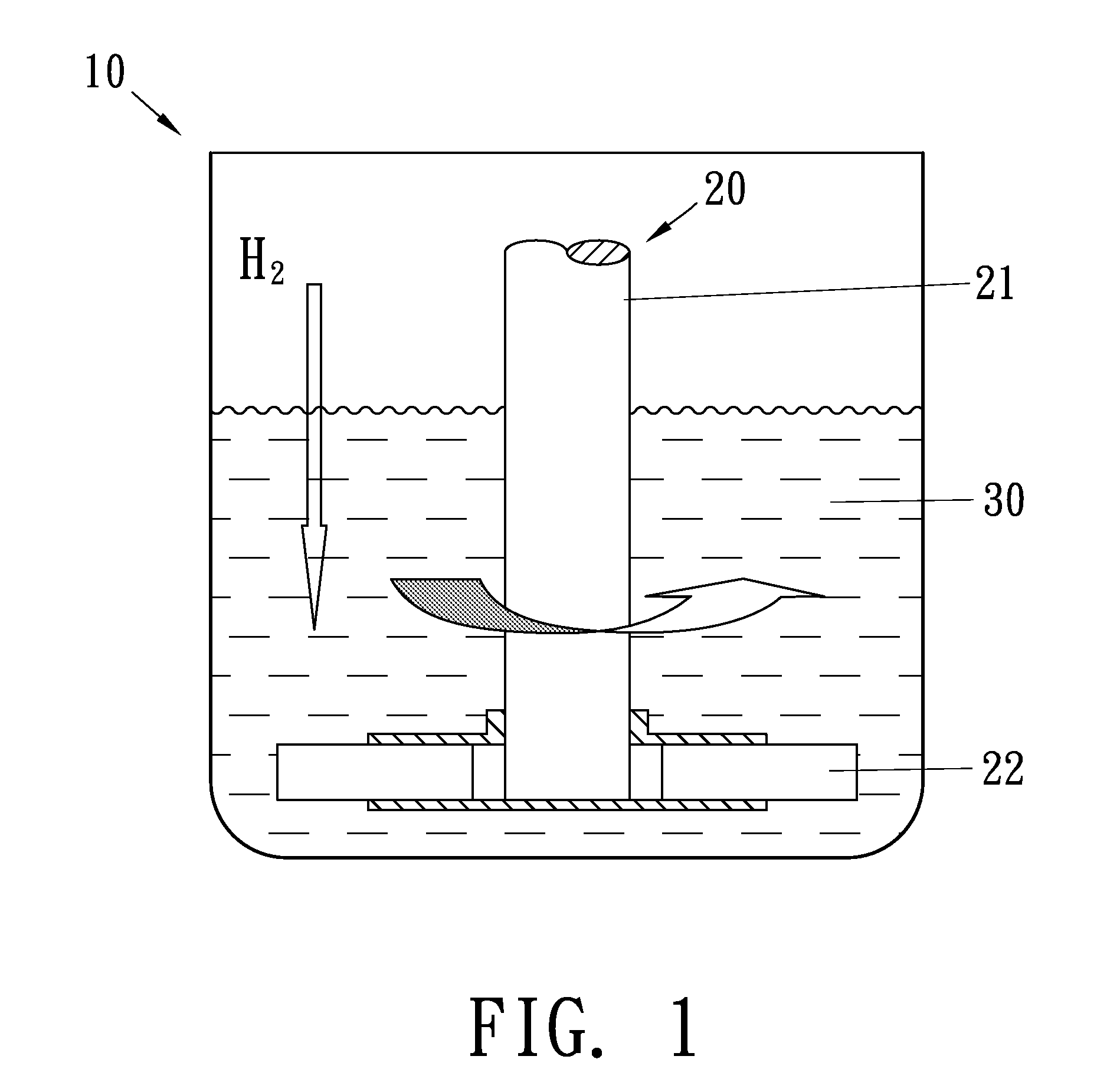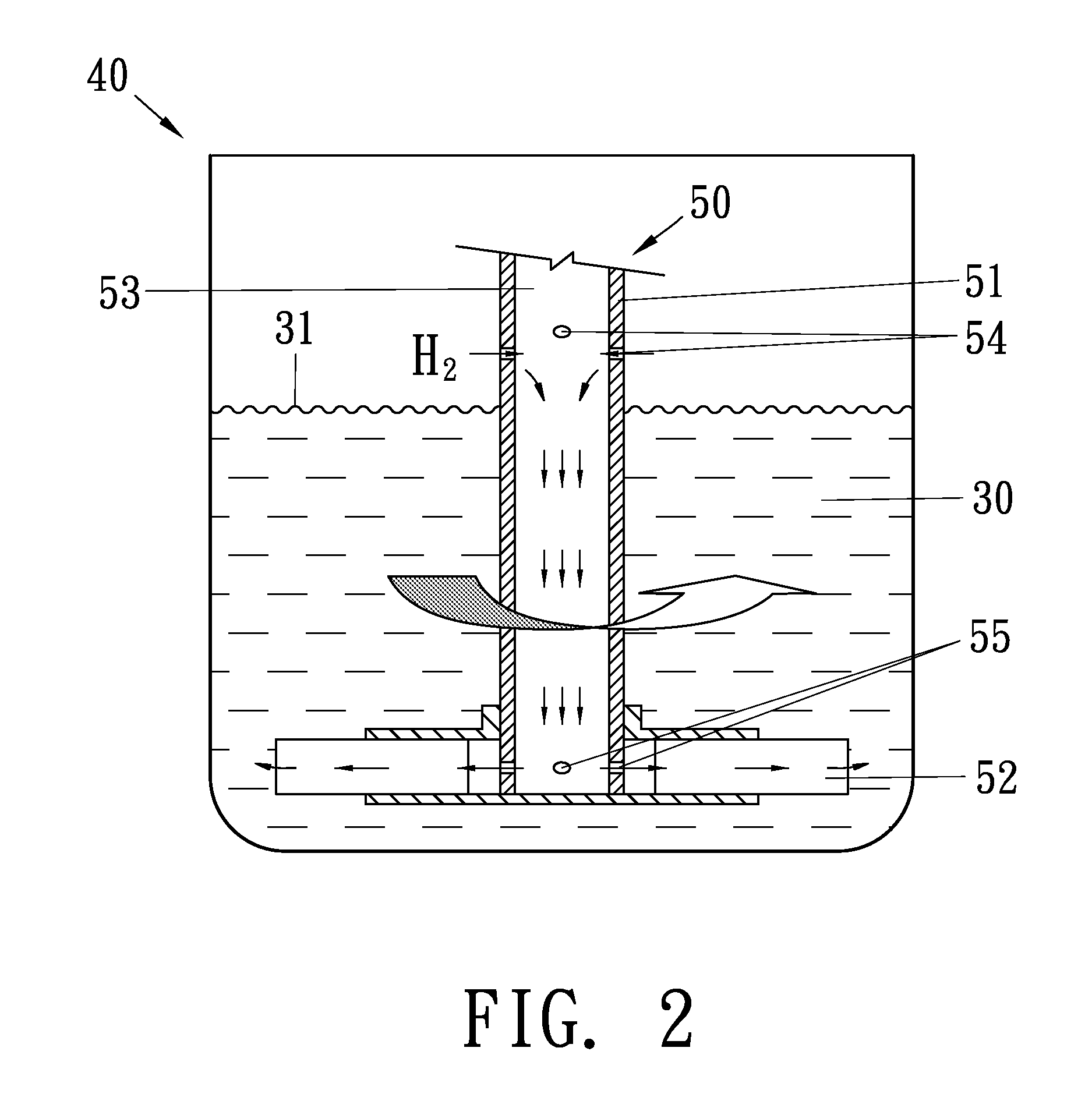Hydrogenation process for improving yield of hydrogenated bisphenol-a-based epoxy resin
a hydrogenation reaction and epoxy resin technology, applied in chemical/physical/physical-chemical processes, chemical apparatus and processes, organic chemistry, etc., can solve the problems of low yield of hydrogenated bisphenol-a-based epoxy resin as a product of hydrogenation reaction, unfavorable industrial production, and high cost of approach, so as to improve the yield of the resultant hydrogenated bisphenol-a-based
- Summary
- Abstract
- Description
- Claims
- Application Information
AI Technical Summary
Benefits of technology
Problems solved by technology
Method used
Image
Examples
example 1
[0046]180 g bisphenol-A-based epoxy resin was weighted and dissolved in 180 g tetrahydrofuran, and placed into a pressure vessel of 0.5 liter with a gas-distributing agitator. 5.4 g rhodium catalyst was added and hydrogen gas was introduced until the pressure reached 590 lb / in2 and maintained. Then the gas-distributing agitator of the vessel was activated to make the hollow shaft rotate in a speed of 1000 rpm. The vessel was heated to 80° C. for subsequent 3 hours of reaction. At the completion of the reaction, the liquid reactant was cooled to the room temperature, before the catalyst was filtered out and tetrahydrofuran was removed to obtain the product. The product was analyzed and the results are reflected in Table 1. The hydrogenated bisphenol-A-based epoxy resin was made with yield of 99.5%.
example 2
[0047]This example is similar to Example 1 except that the pressure of the hydrogen gas was changed to 530 lb / in2. The product was analyzed and the results are reflected in Table 1. The hydrogenated bisphenol-A-based epoxy resin was made with yield of 99.0%.
example 3
[0048]This example is similar to Example 1 except that the pressure of the hydrogen gas was changed to 650 lb / in2. The product was analyzed and the results are reflected in Table 1. The hydrogenated bisphenol-A-based epoxy resin was made with yield of 99.9%.
PUM
| Property | Measurement | Unit |
|---|---|---|
| temperature | aaaaa | aaaaa |
| temperature | aaaaa | aaaaa |
| temperature | aaaaa | aaaaa |
Abstract
Description
Claims
Application Information
 Login to View More
Login to View More - R&D Engineer
- R&D Manager
- IP Professional
- Industry Leading Data Capabilities
- Powerful AI technology
- Patent DNA Extraction
Browse by: Latest US Patents, China's latest patents, Technical Efficacy Thesaurus, Application Domain, Technology Topic, Popular Technical Reports.
© 2024 PatSnap. All rights reserved.Legal|Privacy policy|Modern Slavery Act Transparency Statement|Sitemap|About US| Contact US: help@patsnap.com










